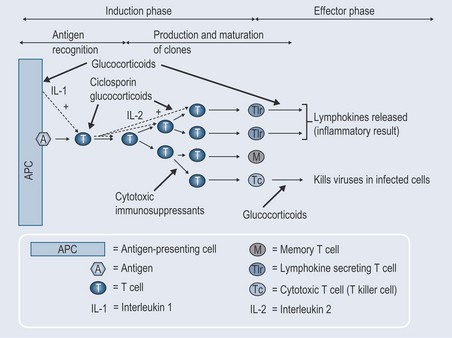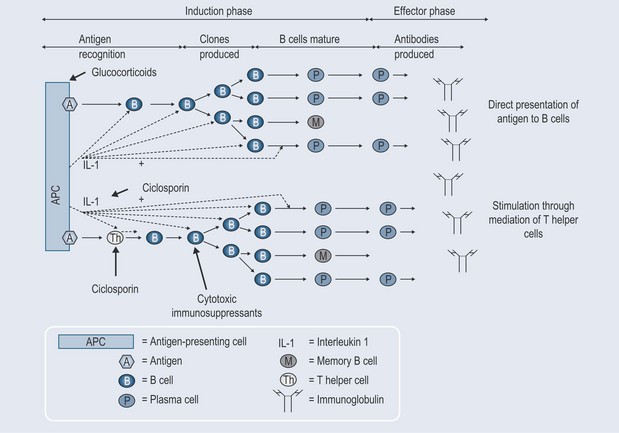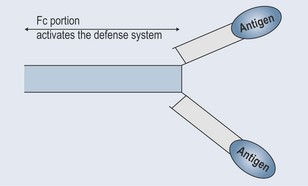Chapter 30 Inflammation and the immune system
The Function of the Immune System
The construction of the immune system allows it to adapt so as to mount a more rapid and vigorous attack each time it encounters a particular pathogen.
Components of the Immune System
Leucocytes
 | Granulocytes produced in bone marrow; 6-day supply in the marrow. | |
• Lymphocytes: continually in the circulatory and lymph systems. Produced mainly in the lymph system (lymph glands, spleen, thymus tonsils, etc.). | ||
• Neutrophils
How Does the Immune System Work?
Pathogens that invade the body stimulate the immune system, which has three main stages of response:
The effector phase is one of the following:
Humoral Response
A humoral-mediated response (Figure 30.1):
Antibodies or immunoglobulins (hence the shorthand Ig) have two main functions:
There are five classes of antibody: IgA, IgD, IgE, IgG and IgM.
• The Complement System
This is similar in mechanism to the coagulation cascade (see Figure 28.1, p. 212). It is activated by interaction in several ways:
The final part of complement activation produces a membrane attack complex, which creates holes in the outer membrane of Gram-negative bacteria (see Figure 29.1, p. 218).
The complement cascade has a feedback mechanism, which in theory should limit its action. However, several of the products of the complement cascade are powerful inflammatory stimulants, so it is possible for the inflammatory response to get out of hand.

Figure 30.3 Diagram demonstrating the cell-mediated response showing points of immunosuppressant interventions.
Stay updated, free articles. Join our Telegram channel

Full access? Get Clinical Tree




